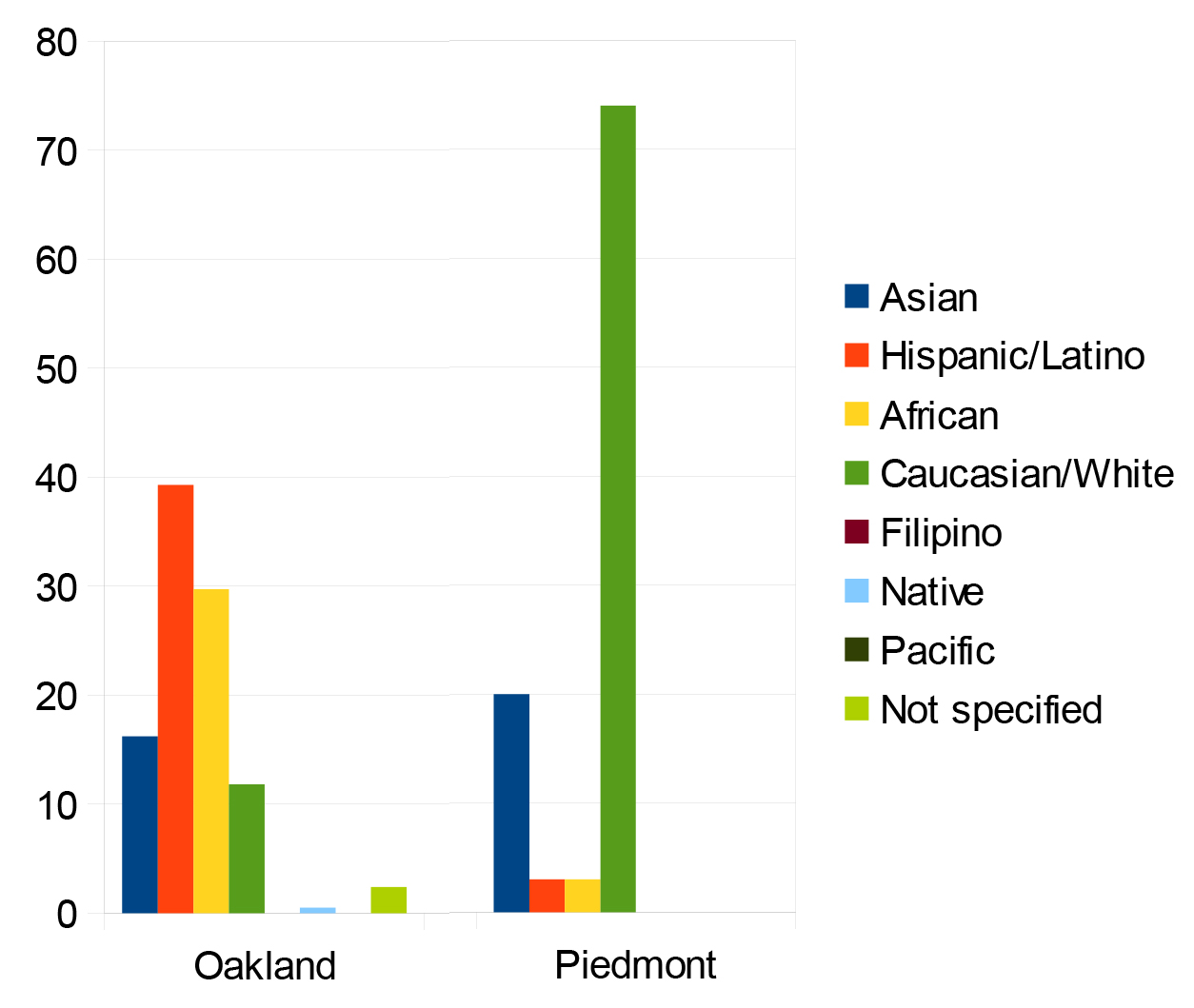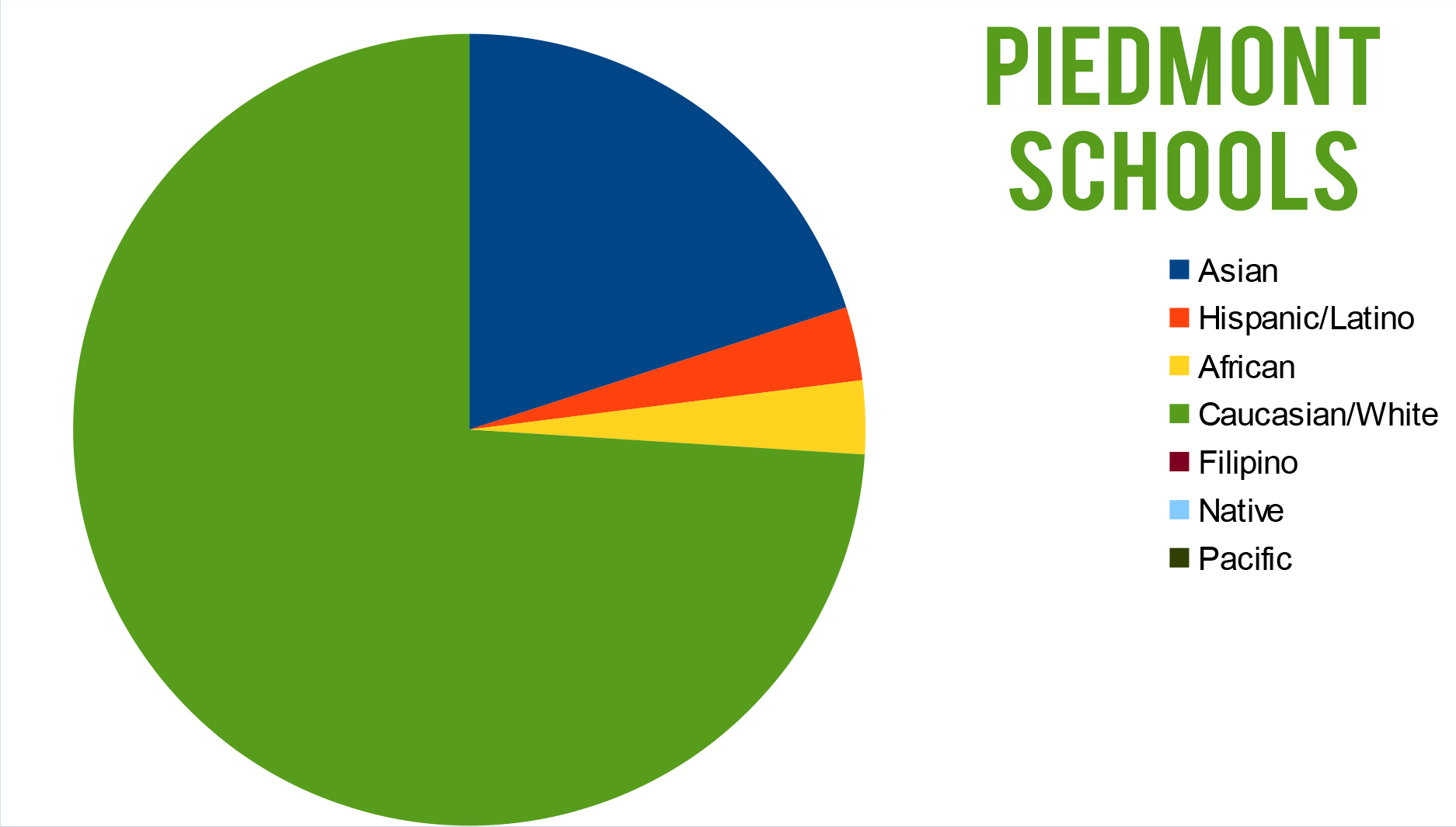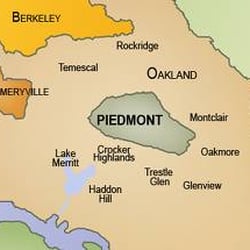




Piedmont, California is unusual because it is a city within a city. Piedmont's area of 1.7 square miles is completely surrounded by the City of Oakland. My research suggests that it was established as an enclave for the rich from the very beginning. Apparently there were not enough ethnic or other minorities considered "undesirable" in Oakland at the time to provide a racist motivation for the town's establishment. According to the city's web page, "In the Roaring Twenties Piedmont was known as the “City of Millionaires” because there were more millionaires per square mile than in any city in the United States."
No matter the intent, the continued existence of Piedmont is a fine example of defacto racism. Not because the people of Piedmont chase out minorities visiting or living in Piedmont, but as a result of the income disparities of the two municipalities and how local schools are administered in California. The result is that Piedmont's public schools are 74% "Caucasian" while Oakland's schools are 11.8% "white." Oakland's public school students are 39.3% "Latino" and 29.7% African American, Piedmont's student's are 3% "Hispanic" and 3% African American. The charts below illustrate the dramatic demographic differences between the two school districts.



Comparing the funding levels for the two school districts was not practical for this writer, but I did compare the amount of government spending per resident for each town.
The City of Piedmont budgeted $22,744,445 in General Fund expenditures for 2016-17. Piedmont's residential population was 10,667 per the 2010 census. The City of Piedmont spent a rough average of $2132. per resident.
The funds budgeted for the City of Oakland's 2016-17 year were $1,182,137,681. Oakland's population was 390,724 per the 2010 census. Oakland spent a rough average of $3025 per resident.
The additional funds per resident in Oakland appears generous until you consider the extra expenses incurred by a large city with a port, sports stadiums, public housing, several freeways and large public parks in addition to a population that includes many people with costly needs including a significant number of those who are recent immigrants, elderly, low income, disabled, mentally ill, homeless etc.
I believe we can safely assume that a wealthy suburban community like Piedmont is not required to spend as much of their tax dollars on basic human needs and infrastructure costs as required in Oakland. The result is that Piedmont residents get more and better direct services from their local government compared to Oaklanders. It pays to be wealthy, especially if you can live in a town like Piedmont where you don't have to share your tax dollars with poor people and most minority groups. Imagine how the money spent on Piedmont's schools and city services would benefit the people of Oakland if Piedmont's tax dollars were shared with the city that encircles it.
The stats quoted and used to make the charts are from these sources:
![]() Back to Oranj Productions Home
Page
Back to Oranj Productions Home
Page
Contact Info
All content Copyright 1993-2017 Oranj Productions.
All Rights Reserved. Commercial use, public distribution or presentation allowed with written permission only.